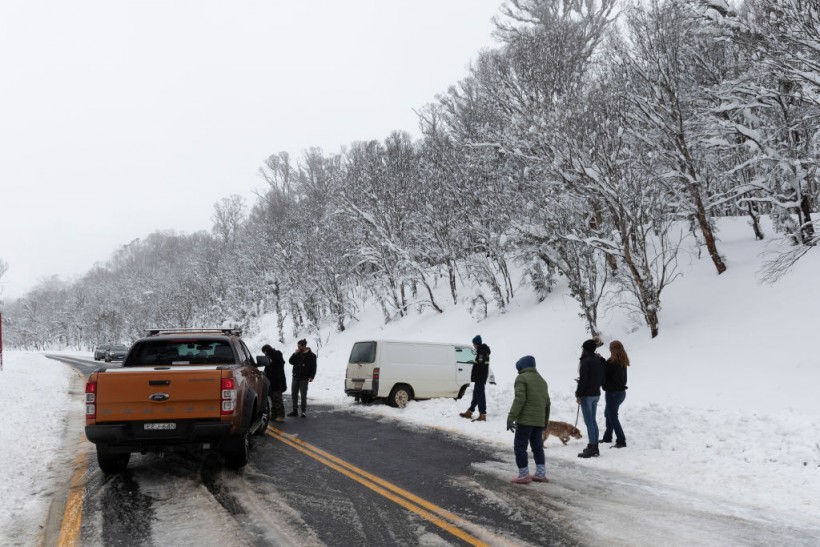Cold fronts have been forecasted to cause wet and windy weather in the southern part of Western Australia state during next week starting Monday, August 1.
Australian meteorologists forecasted that the weather system will bring strong winds, rainfall, and dangerous surf conditions in the said region.
The Australian Government's Bureau of Meteorology (BoM) on Friday, July 29, issued the weather forecast, warning that a series of strong cold fronts are expected to produce strong to gale force winds for most parts of the first week of August.
The adverse weather is being caused by a system on the coast off Western Australia.
The weather phenomenon is unique but common at the same time during this time of the year in Australia, which is currently on its winter season from June to August.
Since late May, there have been instances where cold fronts over Australia brought cold air from Antarctica, causing heavy snow with rainfall occurrences.
While the current cold front is not expected to cause life-threatening risks, coastal areas are at risk of large waves due to the surf conditions.
Cold Front Weather Forecast

The BoM said that the front will cross the Western Australia coast from Monday morning and the severe weather is anticipated to persist until Wednesday evening, August 3.
Flash flooding due to torrential rain is also expected; with heavy downpour accumulating between 50 to 100 millimeters, affecting coastal areas from Geraldton and Albany.
Meanwhile, 10 to 30 millimeters of rain is expected to cover inland areas.
While ground flooding is possible, the Australian weather agency said riverine flooding is not likely to occur at this time.
Also Read: Australia Weather Update: BoM Forecasts Continuance of Cold Front Into the Weekend
Damaging Winds and Surf Conditions
The agency also highlighted that damaging wind gusts could reach around 100 kilometers per hour across the southern half of Western Australia.
In addition, the said dangerous surf conditions may yield total wave heights from seven to 10 meters between Shark Bay and Esperance.
Coastal erosion is also possible in the mentioned areas above. This entails that floodwaters from the ocean could enter the mainland and affect sites that have close proximity to the coast.
During a hurricane, strong winds from the storm system pushes water into the shore.
This causes a weather phenomenon called storm surge, which is almost similar to coastal erosion or coastal flooding.
Coastal erosion is a combination of the storm surge, as well as high tide and wave conditions, according to the National Tidal and Sea Level Facility (NTSLF), which is under the National Oceanography Centre (NOC).
Australia Climate
The impending cold front comes several weeks after heavy rain and flash floods forced thousands of people fled their homes in Sydney and other areas across New South Wales in early July, according to Reuters.
Rainy weather in Australia is still possible, even during its winter season.
This is because the Australian climate is governed by relative heating and cooling based on the Sun's movement southward or northward across the equator.
In this context, the Oceania country has a total of four seasons, including spring, summer, and autumn.
Related Article: Cold Weather to Bring Blast of Snowfall, Damaging Winds, and Freezing Temperatures in Tasmania This Weekend
© 2024 NatureWorldNews.com All rights reserved. Do not reproduce without permission.

![Tsunami Hazard Zones: New US Map Shows Places at Risk of Flooding and Tsunamis Amid Rising Sea Levels [NOAA]](https://1471793142.rsc.cdn77.org/data/thumbs/full/70325/280/157/50/40/tsunami-hazard-zones-new-us-map-shows-places-at-risk-of-flooding-and-tsunamis-amid-rising-sea-levels-noaa.jpg)



